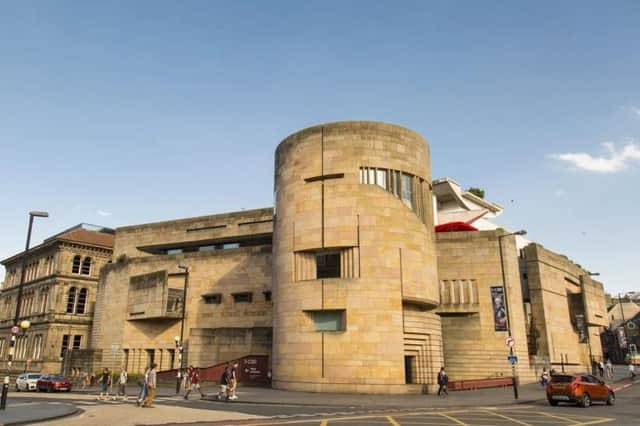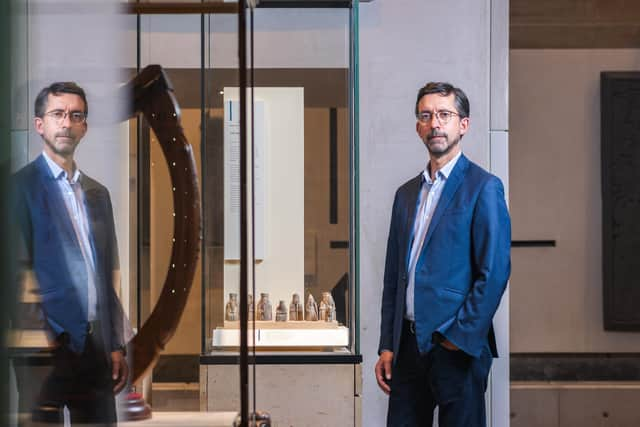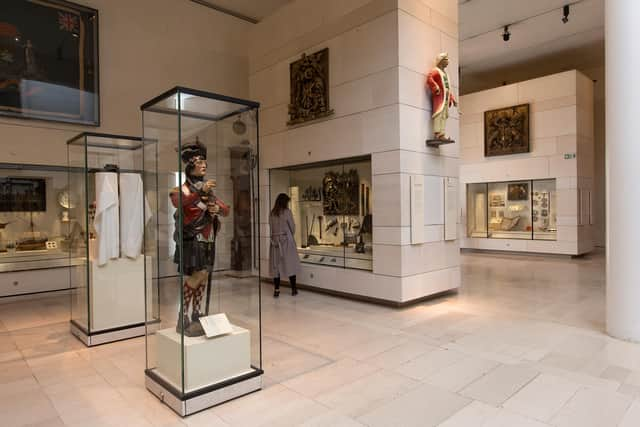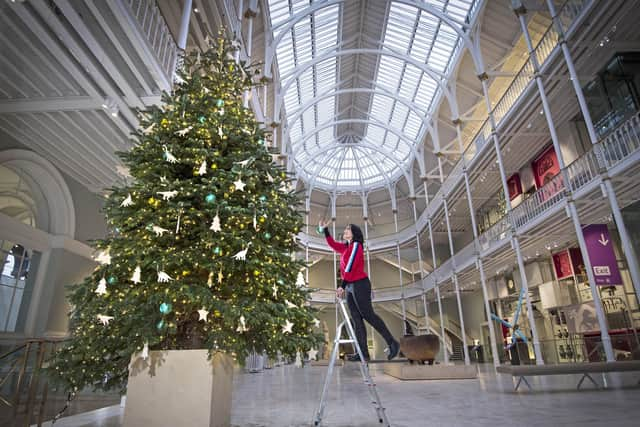New director signals major rethink for National Museum to retell the story of Scotland's past and future


Professor Christopher Breward, who took over the running of the National Museum of Scotland in the spring, said work would be getting underway in 2021 on a “rethink” of the dedicated Scottish galleries created in a major expansion of the Victorian building in Edinburgh in the 1990s.
He suggested that a move away “19th century thinking” about how the lay-out of the museum and curators working in “silos” would be reflected in new displays of Scottish treasures, which could be rolled out from 2022 on.
Advertisement
Hide AdAdvertisement
Hide AdProfessor Breward, previously director of collection and research at the National Galleries of Scotland, said modern-day objects and acquisitions from the fields of science and technology would be used to help visitors into the museum to “try to understand what the future might look like.”


However he also revealed that the attraction was likely to move away from staging major touring exhibitions in future, admitting that museums around the world were already debating the “real cost” of such shows before the Covid-19 outbreak, which closed down the museum for five months in 2020, due to their carbon footprint.
Professor Breward, a former principal of Edinburgh College of Art, said there had been a “deliberate choice” to focus on largely Scottish content in his exhibitions programme in 2021, which will focus on the Galloway Hoard, the Viking-age treasures acquired by the museum three years ago following their discovery by a metal detectorist in Dumfries and Galloway, the writer Sir Walter Scott and Scotland’s response to the climate emergency.
In recent years the museum has created major exhibitions charting the history of Scottish pop and rock music, Bonnie Prince Charlie and the Jacobites, and Mary Queen of Scots. But it has also hosted major touring exhibitions devoted to dinosaurs, monkeys, robots and computer games.
Professor Breward said: "One of the brilliant things about working in a national museum like ours is that there is great potential within our own collection. There’s plenty of imaginative, creative stuff to be done that I’m sure audiences will enjoy.


“The old model of the blockbuster exhibition wasn’t really a sustainable business model. That debate was already happening before the pandemic. The museums sector will be looking at the carbon footprint and real costs of those exhibitions.
“I think we need to focus on themes and issues that have more local relevance in future. There’s an opportunity for new thinking at the moment.
Advertisement
Hide AdAdvertisement
Hide Ad"We’ve already taken a deliberate choice to really focus on Scotland in 2021, to focus on our own collections and focus on some of the issues that are of real interest to our audiences.
“For at least the next six months, or maybe a year, we are going to be reliant on a much more local and national audience for at least the next six months. We have an opportunity at the moment to think about what we mean to people in Scotland. The local has to be the focus at present, with a view to rethinking and maybe resetting for the future.”


The museum’s £45 million eight-storey extension, which was aimed at charting the evolution of Scotland from prehistoric times to the present day, was unveiled in 1998.
A long-term overhaul of the original building, which cost £80 million and took 15 years to complete, was finished in February 2019. Visitor numbers have soared from around 700,000 to more than 2.2 million in that period.
Professor Breward said the future of the Scottish galleries, currently home to around 12,000 objects, would be explored during 2021 as part of work on a new five-year strategy.
He added: “With the move away from the blockbusters, there’s an opportunity to look at the relationship between big exhibitions and permanent displays. I think our focus will move on to how we tell Scotland’s story through our permanent collection and galleries, as much as through temporary exhibitions.
“I think we’ll also see a shift away from big capital projects towards really thinking about the stories we want to tell.
Advertisement
Hide AdAdvertisement
Hide Ad“Our Scottish galleries have stood the test of time for several decades now, but we are now embarking on a rethinking around that collection. The essential underlying stories and the way material is arranged through themes and chronology has stayed much the same.
“One of the great things is the breadth of our collection In the past, curators tended to think in siloed ways about science and technology, the natural world, archaeology and history, and decorative arts. There’s great potential for new thinking.
“How we tell the big stories of Scotland in a way that connects all those elements together is fascinating to me. That’s not really been done before. We’re still working on the footprint of a 19th century museum with 19th century thinking, in many ways.”
“The really interesting thing at the moment is how curators are thinking more and more about the present and the future and looking at things that are making an impact in society, particularly around the natural sciences, biodiversity and technology.
"People should come here to try to understand what the future might look like, as well as understand the past.
“New acquisitions are a great way to generate new ideas and new thinking. The collecting we are doing at the moment is trying to anticipate the things that are of interest at this moment in history that will continue to have an effect in the future.”
A message from the Editor:
Thank you for reading this article. We're more reliant on your support than ever as the shift in consumer habits brought about by coronavirus impacts our advertisers.
If you haven't already, please consider supporting our trusted, fact-checked journalism by taking out a digital subscription.
Joy Yates
Editorial Director
Comments
Want to join the conversation? Please or to comment on this article.